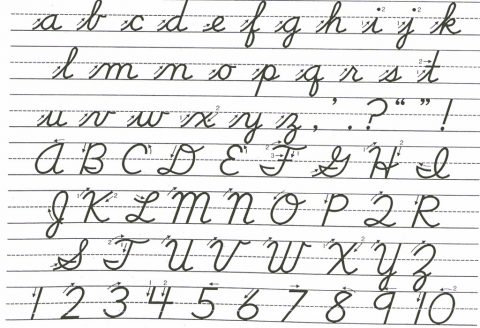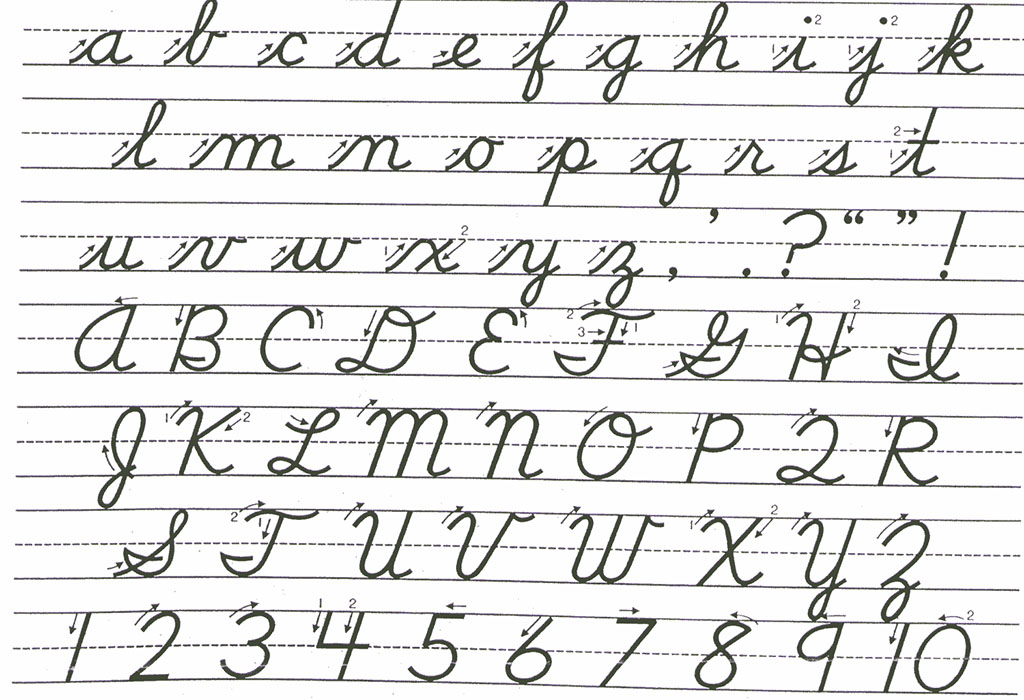 Clarksville, TN – In 2014, the Tennessee Legislature passed a law that cursive writing had to be taught in public schools. The sequence of events leading up to this and the political influences that had caused cursive writing to be almost a lost art reveal the trends not only in education but in society itself.
Clarksville, TN – In 2014, the Tennessee Legislature passed a law that cursive writing had to be taught in public schools. The sequence of events leading up to this and the political influences that had caused cursive writing to be almost a lost art reveal the trends not only in education but in society itself.
Cursive writing is also called longhand, script, handwriting, looped writing, joined-up writing, joint writing, or running writing. This style of penmanship handwriting where letters or symbols are conjoined in a flowing manner. The original purpose of this type of writing was to make the process faster.

Steel tip pens followed quills but still had some limitations even though they were stronger.
The word cursive derives from 18th century Italian corsivo from Medieval Latin cursivus, which literally means running. Some of the oldest cursive writing is found in graffiti written by Roman soldiers so the practice is thousands of years old.
Good reasons for learning cursive include the fact that both the Declaration of Independence and the Constitution are written in cursive. Also, all legal documents—like signing a check, marriage license, mortgage, car purchase, divorce decree, etc.–require a cursive signature. It is true that in the old West people who did not know how to write signed with an “X” but this would easily be forged in today’s society.

When education became test oriented during No Child Left Behind and Common Core, educators began skipping the teaching of cursive writing since it was not required on the numerous tests inflicted on students. Children who were students in these eras often did not learn how to read or write cursive because the teacher did not have time for this type of instruction.
A hue and cry went out as a result and although a large number of states originally dropped cursive writing from their curriculum, several states, including Tennessee, are now mandating that cursive be taught.
Many law books have land transactions written in cursive writing. At one time it was considered the mark of an educated person to write beautiful penmanship called a “fair hand.” During the Colonial Period in the United States, cursive writing was considered so important that whole schools were devoted to its teaching.
The typewriter was invented in 1867 by Christopher Latham Sholes of Milwaukee. It was used for most correspondence and business except personal correspondence which continued to be written in cursive. (In fact, it might have been considered poor manners to write a personal letter on the typewriter, especially if it were a love letter.)
The typewriter was replaced by the end of the 1980s by word processors and personal computers. Schools began focusing on teaching children to use the computer as a necessity as technology became the communication tool of the day.
Handwriting is at a crossroads, with many schools dropping it from their core curriculum at the same time that various new research is showing how handwriting trains the brain.
Benefits of good handwriting practice include:
Increased brain activation;
Improved performance across all academic subjects, especially in language activities such as spelling;
Providing a strong foundation for higher order skills.
According to Brian Palmer in “Is Cursive Dead?” educators could not kill off cursive writing if they wanted to because students tend to make up their own brand of cursive if it is not taught. Looping letters together is faster than block printing. When students are required to take notes in class, they resort to looped or cursive writing even if it is not the conventional form.
Advocates of cursive writing being taught to students come back to the basic reason for handwriting—communication. If all students can produce is messy, illegible printing, they will be handicapped when it comes to adulthood and carrying on the business aspects of life.
Cursive writing? Just get on with it. Whether you think it necessary or obsolete, you can bet for now that it’s here to stay.



